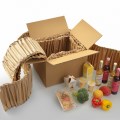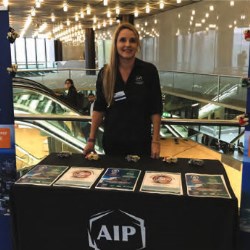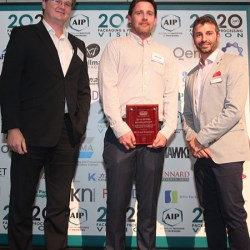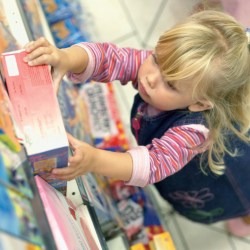If this is your company, CONTACT US to activate Packbase™ software to build your portal.


AIP has accepted an offer by Herbert Weiss of Converting Technology in the United States to address members in Sydney and Melbourne and learn about barcoding technology. Many new technologies fall at the first jump but barcoding cleared all hurdles, and is one of the greatest advances in identification up until the Internet and applications expanding.
It was a new way of identifying products by having a unique marking applied to the package. Across the world countries were allocated a specific number to identify the origin of the code. Australia had been allocated the number nine.
Members of AIP in Victoria were joined by those from the Label and Tag Manufacturers Association of Australia –LATMA- to hear how the last thirty or so years have transpired. ABN has evolved to GS1 Australia and in its many forms has provided regular input to AIP at meetings and conferences.
John Lane, the manager of Testing Services, joined with David Gerring National Sales Manager at David Simpson Graphics to inform the attendance about the business requirements relating to the design, production and printing of bar codes.
John explained that a barcode is simply a type of font the most common types such as EAN-13 and EAN-8 are numeric however some can be alpha or numeric or both combined, but the detail contained can be read by scanners. But if the font is not correctly printed scanners cannot read the information. The human readable data printed below the bar code should match the bar code and is used if the bar code is not able to be scanned. As barcodes are data carriers it is vital that all the information is retrievable when an article is scanned.
There is a sunrise date in 2014 that GS1 DataBar will be accepted by retailers throughout the world for scanning at Point of Sale (POS). The applications for GS1DataBar for very small items as well as variable measure retail items where a select amount of packaged food.
There are also much more sophisticated Two Dimensional (2D) bar codes that are not in general use in the retail sector but are on the horizon and will change the face of scanning. John Lane conducts training courses covering all aspects of barcoding from the basic to the highly technical so explanation beyond this resume is possible.
Much detail of the printing technology was given including the need to have clear crisp and well defined bars that have no voids or smudging. There must be enough contrast between the dark bars and the light spaces for a scanner to be able to read the bar code, but continual checking of print quality is a must.
The message "Barcodes do not scan around corners" seemed to reinforce all the messages that John had passed on.
David Gerring strengthened the technical aspects of prepress requirements to have a successful barcode printed. The direction, colours and positioning is vital to a proper application.


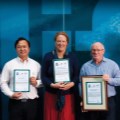
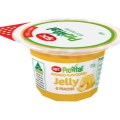

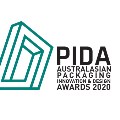
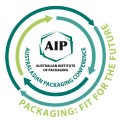
.jpg)







